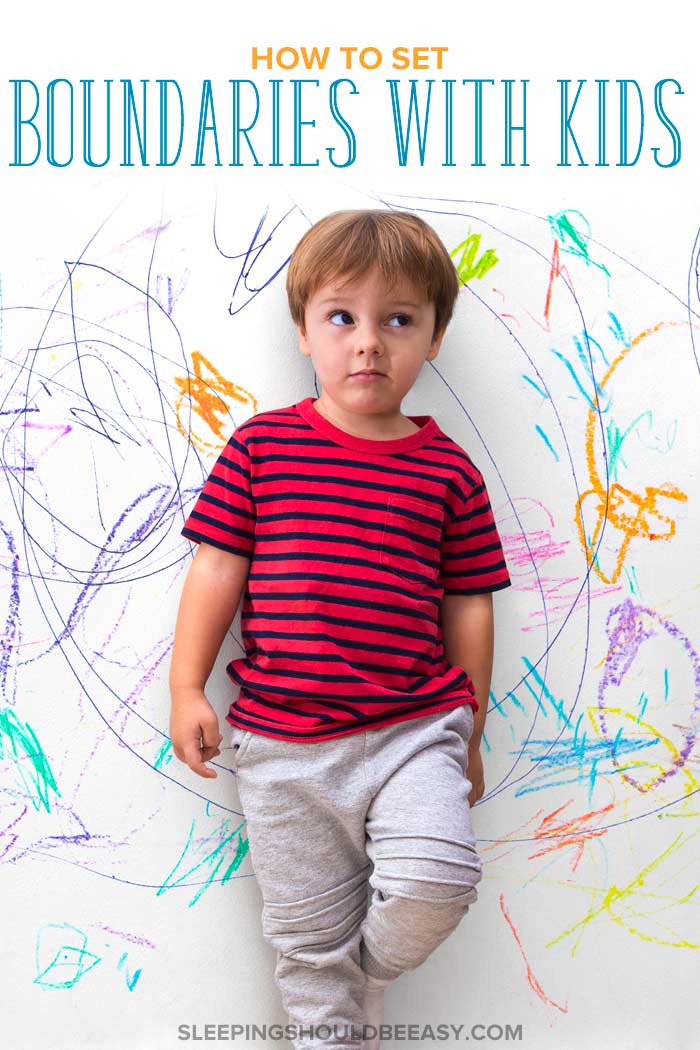Setting Boundaries with Kids
Struggling with setting limits and holding your ground? Learn about setting boundaries with kids — and why they actually want them.
 It’s always the little things.
It’s always the little things.
Wanting the white cup instead of the orange one. Putting their feet on the dining table when you’ve told them not to. The arguments at bedtime because they don’t want to brush their teeth.
At first, accommodating their requests seems easier. What’s one more story to read at bedtime? And that extra toy they asked for at the store seems educational enough.
But those can lead to bigger problems, like talking back and outright disobeying on purpose. You’re then too tired to discipline or deal with yet another outburst. So, you give in.
No wonder you sometimes feel like they’re running the show.
Table of Contents
The importance of setting boundaries with kids
The thing is, I’ve learned kids need freedom and boundaries.
Imagine a farm, with a fence you’ve put up to contain the animals. Without the fence, the animals run wild and stray too far. It’s harder to rein them in, and everything is chaotic. But if fenced too close, they don’t have that personal space and feel unhappy and constricted.
The key is finding that balance—neither extreme offers a sense of security.
Don’t think of boundaries as being mean or saying “no” all the time. Even at a young age, kids want healthy boundaries. Yup, even if they’re upset about doing chores or begging us for more screen time, they feel more secure when we impose restrictions.
Because that tantrum they just had? It scares them to feel that way. And when we back down and don’t hold our ground, then that tantrum seems scarier than ever. After all, if their parents can’t stand up against a tantrum, then who will?
Freedom allows them to develop and grow, but age-appropriate boundaries give them the safe space to do so. They guide our kids as they evaluate whether something is okay or not.
Boundaries also strengthen our relationship with our kids. We firmly but kindly let them know clear limits to follow. They learn important lessons in patience, empathy, and being responsible. And they understand that meaningful and healthy relationships are set on a two-way street.
How to set boundaries with kids
For many of us, establishing boundaries might be hard. We don’t like being the “bad guy” and prefer to give kisses and affection. And at the end of a tiring day, sometimes we just don’t have the patience to be present and calm when giving in seems much easier.
Hang in there, friend. You can still give your children boundaries, even when it’s hard at first. Remember, they not only need boundaries, but want them to better direct their decisions. Here’s how to do just that:
1. Understand why you’re setting boundaries
Think about the last time you had to tell your child “no.” What was your mood, your environment? Were you frustrated because he interrupted an important task you were doing? Or were you intentional about your decision and calm in your own emotions?
Setting boundaries isn’t a parent’s “privilege.” It’s not what we do to show who’s boss or win an argument. We can’t use the boundaries card each time we want to end a frustrating interaction.
Be mindful of why you’re setting boundaries. What are your goals and motivations? Base your decisions on what your child can learn from the situation and about himself, or base it on your parental boundaries and how you want others to treat you.
Don’t use boundaries as a tool during power struggles—it’s this misuse that makes kids misunderstand and resent them.
Free resource: Struggling with raising a strong-willed child? Grab 5 Tips to Raising a Strong-Willed Child! Discover how to nurture and work with—not against—his inner spirit and strong personality. You’ll also get my newsletters, which parents say they LOVE:
“Thank you so much Nina, this really spoke to me and I shared this email with a friend. So thankful for how you share your experiences with practical, very worthwhile advice. What a blessing!! Thank you again for your encouraging words you share with other parents.” -Martina
2. Be firm and kind
Set boundaries in a firm and kind tone—this is the balance between blind strictness and sugarcoating.
You shouldn’t come from a place of anger, anxiety, or disappointment. Instead, understand how boundaries can help your child. Kids deserve our respect and kindness, even when they’re in tears or irritate us.
At the same time, be firm in your decisions. You know why you made them and the boundaries you’ve set. Being firm shows that you’re acting from a place of good intention and are doing what you think is best for him.
3. Give a time frame or reason
Kids respond well to reason and fairness, and one of the best ways to meet them halfway is by giving a time frame.
Let’s say your child asked to read a book with you, but you were in the middle of cooking. Explain why you can’t read at the moment, then give a time frame. Say, “In about five minutes, after I get all the burger patties flipped, we could read the book together.”
You might even ask him if he wants to read next to you while you cook. This can help cement the idea that you’re not saying “no” just because, but that you have a good reason. Plus, he can appreciate the autonomy by doing things on his own as he waits.
Another way giving a reason helps is that you’re able to explain poor behavior. Let’s say he said hurtful things to you. Establish your boundaries by saying how his words hurt your feelings. Explain how you expect him to treat you, and how he can better express himself.
4. Give freedom within boundaries
A bit of preparation can save you so much frustration when you set boundaries. Back to our analogy of boundaries as fences: Think of ways you can erect those fences even before your kids need them.
For instance, set physical boundaries by baby proofing your home. Instead of telling your now-mobile infant or your curious toddler not to touch this or that, make the room safe for her. Prevent common dangers by baby proofing, then allow her to explore within those confines.
The same goes for the choices your older child makes. She can wear any clothes from a certain drawer, one you stocked with winter attire. You’re giving her the freedom to decide what to wear, but within the boundaries that the clothes have to be appropriate for the season.
Examples of setting boundaries
We’ve talked about the balance of giving enough freedom within safe and reasonable boundaries. What are a few real world examples of boundaries that you can use for your child? Here are a few:
- Deciding when and what she eats while letting her choose how much
- Letting her run freely at the park while making sure you hold hands crossing the street
- Baby proofing certain areas in your home so she can roam safely
- Allowing her to choose among weather- and event-appropriate clothes you set out
- Giving the freedom to play throughout the house so long as she follows clear rules and responsibilities (such as not climbing on furniture)
- Having a consistent routine for meals, naps, and bedtimes to nurture predictability
Conclusion
Disclosure: This article contains affiliate links. As an Amazon Associate, I earn from qualifying purchases.
As difficult as it is to set boundaries, it’s also okay to say “no.” We don’t need to please our kids or even make them happy.
These “fences” are just what they need to explore, learn, and grow in a safe way. Boundaries lead to better behavior and clear expectations for both parents and kids.
Jessica Lahey, author of The Gift of Failure, says it well:
“Limits are structure. Limits give kids reassuring information about what to expect and how to act according to those expectations. Limits make kids feel safe and cared for.”
As much as they throw tantrums, whine, or cry, kids want boundaries—and parents who are intentional enough to set them.
Don’t forget: Join my newsletter and grab 5 Tips to Raising a Strong-Willed Child below—at no cost to you:




